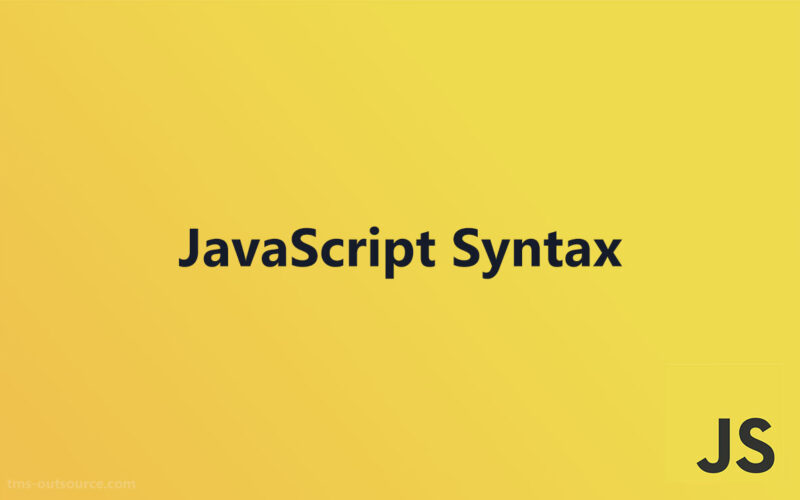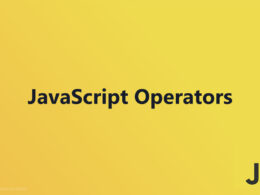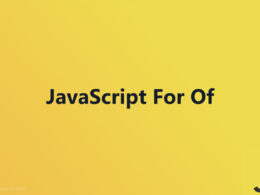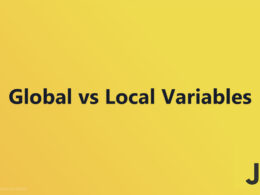JavaScript Syntax Essentials for Effective Coding

Understanding JavaScript Syntax is foundational for anyone diving into web development or enhancing their front-end programming skills.
This article explores the core concepts ranging from variables and control structures to error handling and DOM manipulation.
Whether you’re new to JavaScript or looking to refine your existing knowledge, this guide provides the essential details to script effectively and efficiently.
Fundamental Syntax Components
Values and Data Types
Every piece of data in JavaScript falls into two broad categories: primitive and composite types. Understanding these is key to mastering JavaScript Syntax and enhancing your web development skills.
- Primitive types:
- Undefined: It’s a type given to variables that are not yet defined.
- Number: This includes any integer or floating-point number.
- BigInt: Designed for larger integers than the Number type can hold.
- String: Represents textual data.
- Boolean: Can only be true or false.
- Symbol: A unique and immutable primitive introduced in ES6, useful for object properties.
- Composite types:
- Objects: Collections of properties, where each property is either a primitive type or another object.
- Arrays: A list-like object whose prototype has methods to perform traversal and mutation operations.
Declarations and Variables
Variables are foundational elements in JavaScript, allowing developers to store, retrieve, and manipulate data.
Understanding the scope and lifecycle of these variables is critical for managing state effectively within your applications.
- Var, Let, and Const:
- Var: An old keyword that declares a function-scoped or globally-scoped variable, potentially leading to unexpected behavior if not handled carefully.
- Let: Introduces block scope to JavaScript, reducing the pitfalls of
var. - Const: Similar to
let, but once assigned, its value cannot change.
- Scoping rules and hoisting behavior:
- Scoping rules: Determines the visibility and lifetime of variables and parameters.
- Hoisting: Variable and function declarations are moved to the top of their containing scope during compilation phase, making them visible before their actual declaration in code.
Operators and Expressions
Operators allow you to perform operations on values and variables.
Expressions combine variables and operators to create new values. Both play a crucial role in scripting logic.
- Arithmetic, assignment, and comparison operators:
- Arithmetic: Such as
+,-,*,/which are used for performing mathematical operations. - Assignment:
=,+=,-=,*=assign values to JavaScript variables. - Comparison: Such as
==,!=,===,!==help in comparing values and making decisions.
- Arithmetic: Such as
- Logical, bitwise, and other operators:
- Logical operators:
&&(and),||(or),!(not) are crucial for control flow in coding. - Bitwise operators: Work on binary representation of numbers, useful in scenarios like permission settings and low-level data manipulation.
- Logical operators:
This foundational knowledge not only enhances your coding skills but also prepares you for more advanced topics like DOM Manipulation, tap into JavaScript Libraries and frameworks, and contribute effectively to Modern JavaScript Features and applications.
Control Structures and Error Handling
Statements and Control Flow
Handling different conditions and iterating over data are fundamental in programming. Clear understanding of these concepts facilitates efficient code and aids in managing its flow dynamically.
- Conditional statements: If…Else, Switch
- If…Else is used to execute code based on whether a condition is true or not. It helps in decision-making within your applications.
- Switch statements offer a more streamlined way of dealing with multiple potential conditions by matching an expression’s value against multiple case values and executing the corresponding code block.
- Loops: For, While, Do-While
- For loops are ideal when the number of iterations is known beforehand. They consist of three parts: initialization, condition, and increment.
- While loops execute as long as the provided condition evaluates to true, useful for scenarios where the number of iterations isn’t known before looping begins.
- Do-While loops are similar to while loops, but they guarantee that the code inside the loop executes at least once.
Exception Handling Mechanisms
Robust code requires mechanisms to handle errors and exceptions gracefully, ensuring that the user experience remains unaffected by unexpected failures.
- Try, Catch, Finally
- The Try block allows you to test a block of code for errors.
- The Catch block lets you handle the error, providing an opportunity to fix it or give feedback.
- The Finally block executes code after try and catch, regardless of the result. It’s a good place to clean up resources or perform final steps.
- Error types and handling errors
- JavaScript supports several built-in error types like
ReferenceError,SyntaxError, andTypeError. Each can give insights into issues during runtime. - Handling these errors effectively involves anticipating likely failure points in your code and using catch statements to manage errors gracefully when they occur.
- JavaScript supports several built-in error types like
This awareness of proper handling and structuring techniques for control flow, combined with an understanding of exception mechanisms, furthers your capability to create well-rounded web applications.
Functions and Event Handling
Defining Functions

In JavaScript, functions are blocks of code designed to perform a particular task, essential in writing clean, maintainable code.
Understanding different ways to define functions helps leverage various features depending on the context of use.
- Function declaration vs. function expression
- A function declaration defines a function with the specified parameters. You can call it before it’s declared due to how JavaScript interprets functions, known as hoisting.
- A function expression creates a function and assigns it to a variable. This function can only be accessed after its creation, providing a modular, flexible way to manage functions, aligning closely with JavaScript best practices.
- Arrow functions and their scopes
- Arrow functions offer a concise syntax to write function expressions. They don’t have their own
this,arguments,super, ornew.targetbindings, which makes them ideal for non-method functions, but they cannot be used as constructors.
- Arrow functions offer a concise syntax to write function expressions. They don’t have their own
Utilizing Events

Event handling is pivotal in interactive web applications, allowing users to engage with the content dynamically through common interactions like clicks, input changes, and page loads.
- Event listeners and event propagation
- Event listeners are used to watch for occurrences of specific events and execute a function when that event is triggered. JavaScript offers
addEventListener()andremoveEventListener(), these methods help manage event handling cleanly. - Event propagation in JavaScript can occur in two phases: capture and bubble. Understanding this helps in effectively managing how events are handled in nested structures.
- Event listeners are used to watch for occurrences of specific events and execute a function when that event is triggered. JavaScript offers
- Common DOM events
- Among the most frequently used DOM events are
click,mouseenter,mouseleave,keyup,keydown, andload. These events are foundational for creating responsive, interactive web pages that improve user engagement and website performance metrics.
- Among the most frequently used DOM events are
Working with Objects and Arrays
Object-Oriented Concepts in JavaScript

JavaScript’s flexibility allows you to implement object-oriented programming techniques, which enhances code readability and maintainability.
- Creating objects and methods
- Objects can be created using literal notation or constructor functions. Methods are functions stored as object properties and provide behavior for an object.
- Please note, in JavaScript you’d commonly use
thiskeyword inside methods to reference the current object which gives methods access to object’s properties and other methods.
- Constructors and inheritance
- Constructors are special functions used to create instances of an object. Using the
newkeyword activates these constructors. - Inheritance is a way to form relationships between objects, thus allowing objects to inherit features from others. JavaScript implements inheritance using prototypes.
- Constructors are special functions used to create instances of an object. Using the
Array Manipulations
Arrays in JavaScript are used to store multiple values in a single variable and come with a number of built-in methods to perform operations on these arrays.
- Methods for iterating and manipulating arrays
- Some common methods include
forEach()for executing a function on each item,map()for creating a new array with results of calling a function for every array element, andfilter()to create a new array containing only elements that pass a test defined by a provided function.
- Some common methods include
- Techniques for effective data handling
- Efficient data handling involves using methods like
reduce()for boiling down a list of values into a single result and using spread syntax...for easy expanding of elements. Understanding and leveraging these techniques can significantly streamline your workflow in JavaScript.
- Efficient data handling involves using methods like
Additional JavaScript Components
JavaScript in Web Browsers
Understanding how JavaScript interacts within web browsers is essential for any dynamic web application. This understanding significantly influences both user and developer experiences.
- Interaction with HTML/CSS
- JavaScript dynamically interacts with HTML and CSS through the
documentobject, allowing you to manipulate elements, change styles, respond to user inputs, and more. This capability is a cornerstone of modern web interactivity.
- JavaScript dynamically interacts with HTML and CSS through the
- Document Object Model (DOM) manipulation
- DOM manipulation involves changing the document structure, style, and content of a website using JavaScript. This includes everything from adding, removing, or modifying elements to changing their attributes or CSS styles.
Regular Expressions and Date Handling
Leveraging built-in JavaScript methods for working with text patterns and dates can enhance the functionality and efficiency of your applications.
- Using regular expressions for pattern matching
- Regular expressions provide a powerful way of searching and replacing patterns in text. They are used for form validations, searching within a body of text, and any other text manipulation needing pattern recognition.
- Methods for managing dates and times
- JavaScript offers a
Dateobject that handles both dates and time. You can use methods likeDate.now(),new Date(), and others to create, modify, and display dates and times within your application, ensuring accurate timing and scheduling across global applications.
- JavaScript offers a
FAQ On JavaScript Syntax
What exactly is JavaScript Syntax?
JavaScript Syntax is the set of rules and structures used to write instructions in JavaScript, the language of the web. It includes everything from declaring variables to creating functions, handling events, and manipulating the DOM for interactive web experiences.
How do I declare a variable in JavaScript?
To declare a variable in JavaScript, use the keywords var, let, or const, followed by the variable’s name. let and const are block-scoped and generally preferred for their predictability over var, which is function-scoped.
What’s the difference between == and ===?
== compares two values for equality after converting both to a common type. === is known as the strict equality operator, which checks both value and type, which is why it’s recommended for preventing unexpected type coercion.
How do functions work in JavaScript?
Functions are blocks of code designed to perform a particular task; they are invoked as needed. JavaScript supports both function declarations and expressions, providing flexibility depending on how and where you want to use the function.
Can you modify an array in JavaScript?
Absolutely, arrays in JavaScript are mutable. You can use methods like push(), pop(), shift(), unshift(), and splice() to add, remove, and alter elements within an array efficiently.
What are JavaScript objects?
JavaScript objects are collections of properties, mapped between keys and values. Objects are essential for building scalable applications, allowing developers to group related data and functions together in a structured way.
How do you implement looping structures in JavaScript?
JavaScript offers several looping mechanisms, including for, while, and do-while loops. Each serves different scenarios: for is well-suited for counting-based loops, while while and do-while cater to condition-based looping.
What is event bubbling in JavaScript?
Event bubbling is a process where an event triggered on a DOM element subsequently propagates to the parent elements. This behavior is fundamental for event handling in complex web applications, allowing for a cleaner and more dynamic interaction design.
How do you handle exceptions in JavaScript?
Use the try...catch statement to handle exceptions. Wrap code that might throw an error in a try block and handle the exception in the catch block. It’s a vital strategy to ensure your web applications run smoothly despite runtime errors.
What are some best practices for writing clean JavaScript code?
Writing clean JavaScript involves several practices: using meaningful variable names, avoiding global variables, writing small and pure functions, and using comments sparingly.
Additionally, leveraging modern ES6+ features like arrow functions and template literals can greatly enhance your code readability and efficiency.
Conclusion
Exploring JavaScript Syntax exposes the intricacies that power interactive and dynamic web applications. Mastering variable declarations, looping structures, functions, and events forms the backbone of efficient script writing.
Embrace these concepts, and soon managing DOM manipulation, leveraging event listeners, and utilizing arrays and objects will become second nature.
Remember, the key to excelling in web development doesn’t stop at knowledge; it’s about continual practice and applying best practices in real-world scenarios.
Keep coding, keep refining, and the results will surely reflect in your polished, functional web projects.
If you liked this article about JavaScript Syntax, you should check out this article about how to link JavaScript to HTML.
There are also similar articles discussing JavaScript Statements, JavaScript Output, innerHTML Property, and document.write() Method.
And let’s not forget about articles on window.alert() Method, console.log() Method, window.print() Method, and window.prompt() Method.
- How much does android app development cost? - June 17, 2024
- E-commerce Excellence: Build Stores with Apps Like Shopify - June 16, 2024
- Efficient Coding with JavaScript Comma Operators - June 16, 2024








